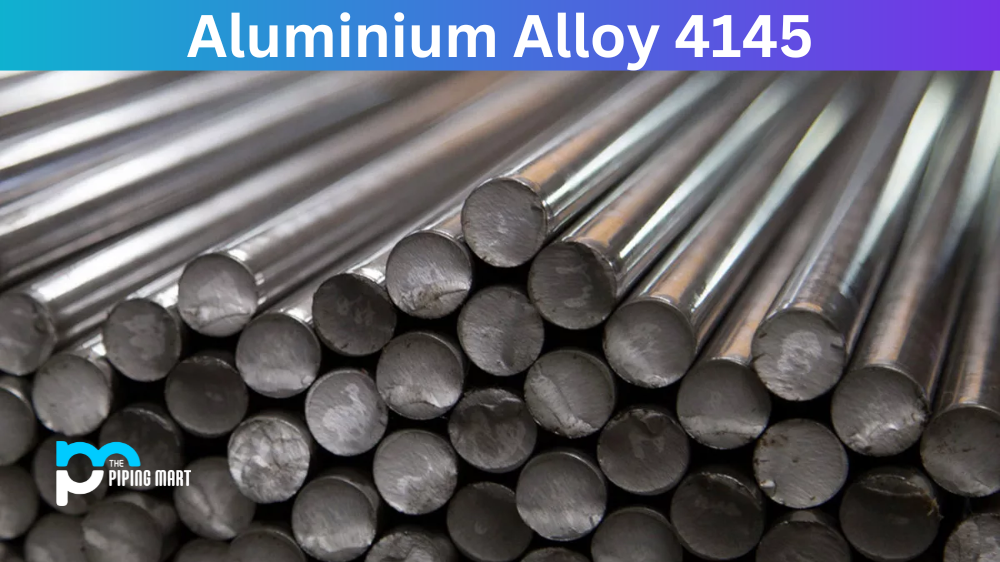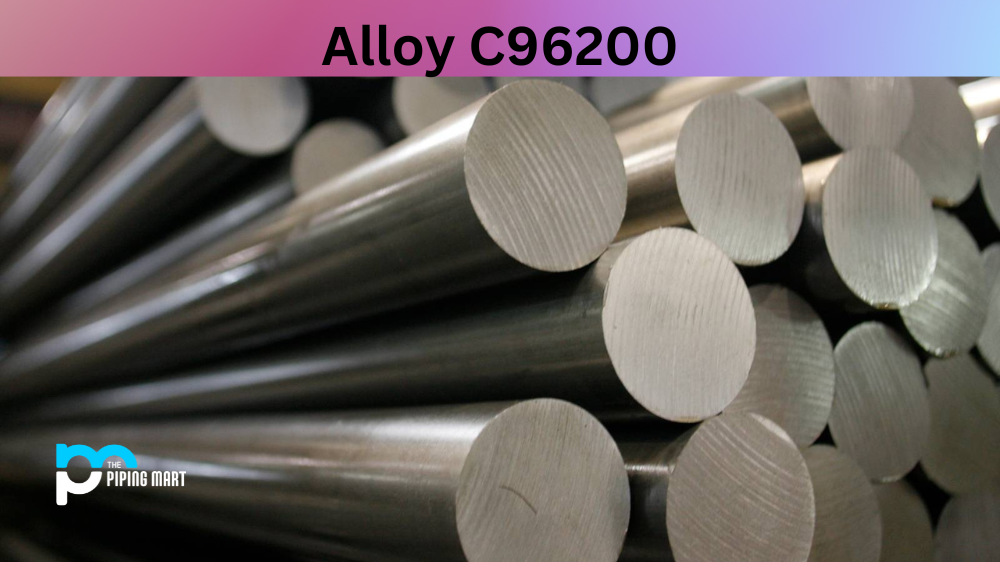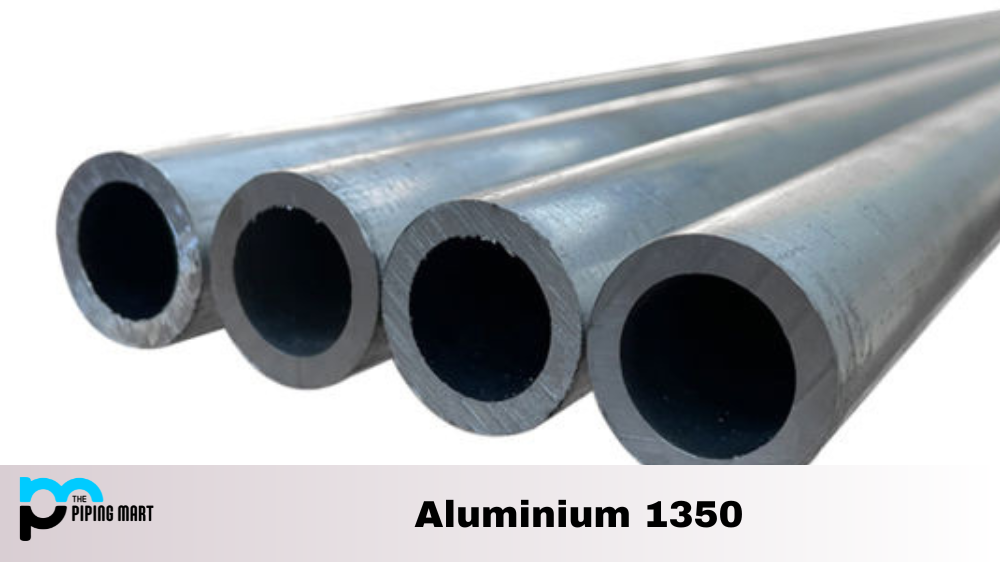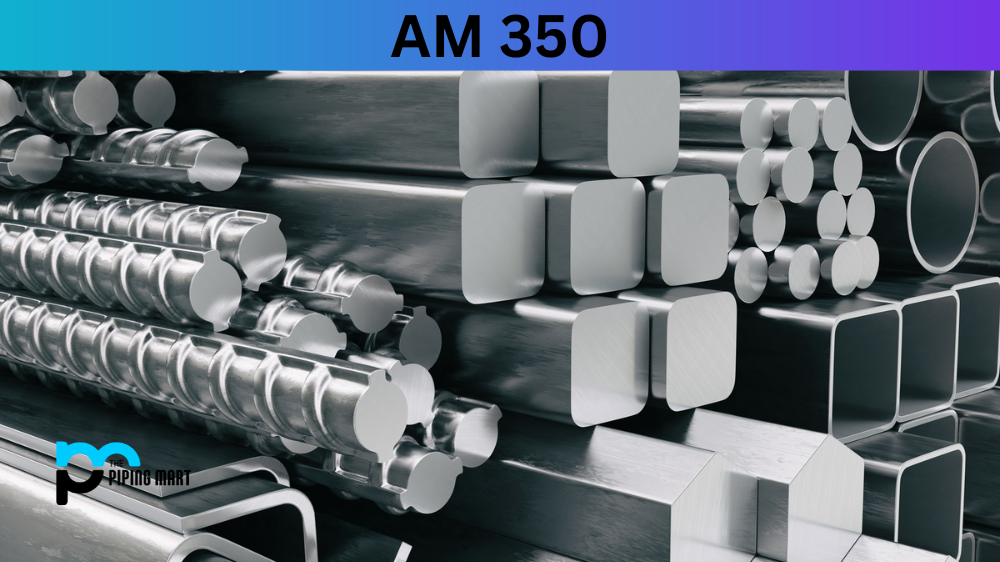Aluminium alloys are among the most widely used materials in different industries due to their exceptional properties, lightweight, durability, and excellent corrosion resistance. One of the most popular aluminium alloys is the 4145, which has gained much traction recently. In this blog post, we’ll offer a comprehensive guide to everything you need to know about aluminium alloy 4145, including its composition, mechanical and physical properties, uses, and more.
Aluminium 4145 Composition
Aluminium alloy 4145 is a wrought alloy that primarily contains aluminium, with the addition of copper, magnesium, and silicon. The copper content is typically between 3.8% and 4.8%, while magnesium is between 1.2% and 1.8%. Small silicon addition also contributes to its improved mechanical and physical properties.
| Element | Content (%) |
|---|---|
| Aluminum, Al | 83 – 87.4 |
| Silicon, Si | 9.3 – 10.7 |
| Copper, Cu | 3.3 – 4.7 |
| Iron, Fe | ≤ 0.80 |
| Zinc, Zn | ≤ 0.20 |
| Magnesium, Mg | ≤ 0.15 |
| Chromium, Cr | ≤ 0.15 |
| Manganese, Mn | ≤ 0.15 |
| Beryllium, Be | ≤ 0.00080 |
| The remainder (each) | ≤ 0.050 |
| The rest (total) | ≤ 0.15 |
Aluminium 4145 Mechanical Properties
Aluminium alloy 4145 has excellent mechanical properties, such as high strength, fatigue resistance, and formability. Its typical tensile strength is between 400 and 450 MPa, with a yield strength of 380 MPa. It has a relatively high elongation to failure of up to 13%, coupled with excellent toughness and ductility. These desirable mechanical properties allow aluminium alloy 4145 to be used in numerous applications, such as automotive parts, aerospace components, and the marine industry.
Aluminium 4145 Physical properties
The physical properties of aluminium alloy 4145 include a low density of 2.71 g/cm³, making it lightweight and perfect for weight-restricted applications. Its coefficient of thermal expansion is relatively low, at 23.7 x 10^-6/K, which means it expands or contracts less than other metals under temperature changes. Moreover, aluminium alloy 4145 has an excellent electrical conductivity of over 30% IACS, making it a suitable material for electrical and electronic components.
| Properties | Metric | Imperial |
|---|---|---|
| Density | 2.74 g/cm3 | 0.0990 lb/in3 |
| Melting point | 521-585°C | 970-1085°F |
Aluminium 4145 Equivalent
- ANSI/AWS A5.10 (ER & R)
- ANSI/AWS A5.8
- AMS 4184
Aluminium 4145 Uses
Thanks to its desirable mechanical and physical properties, aluminium alloy 4145 can be used in different industries, such as aerospace, automotive, marine, and more. It is commonly used to manufacture structural components like frames, doors, panels, and beams. It also makes wheels, brackets, pulleys, and gears. Additionally, the 4145 alloys is widely used in welding and brazing applications, making it a popular choice in industries that require reliable and robust joined components.
Aluminium 4145 Corrosion Resistance
Aluminium is known for its exceptional corrosion resistance; the 4145 alloy is no exception. It has a natural oxide film that protects it from various environmental factors, such as moisture, humidity, and pollutants. Moreover, its copper content contributes to its corrosion resistance, making it an ideal choice in harsh environments with high humidity and salty mist, such as marine applications.
Aluminium 4145 Heat treatment
The heat treatment of aluminium alloy 4145 involves heating it to 500 to 525°C for two hours, followed by water quenching to achieve maximum strength.
Aluminium 4145 Machining
On the other hand, machining of aluminium alloy 4145 requires sharp cutting tools and adequate lubrication to prevent built-up edges and promote chip formation. Carbide tools are recommended since they have excellent wear resistance.
Aluminium 4145 Welding
Welding of aluminium alloy 4145 is challenging, as it is highly reactive and has a low melting point. However, you can achieve a robust and reliable welded joint with proper preparation and the correct welding technique. Gas tungsten arc welding (GTAW) is a recommended welding technique because it provides a precise and high-quality weld.
Conclusion
Aluminium alloy 4145 is an excellent material with fantastic mechanical and physical properties that make it suitable for various industrial applications. Its outstanding corrosion resistance, lightweight, and excellent formability make it an ideal choice in aerospace, automotive, marine, and other industries. You can take full advantage of its desirable properties and create high-quality products with proper heat treatment, machining, and welding techniques. We hope this comprehensive guide has provided you with all the essential information you need to know about aluminium alloy 4145.

A passionate metal industry expert and blogger. With over 5 years of experience in the field, Palak brings a wealth of knowledge and insight to her writing. Whether discussing the latest trends in the metal industry or sharing tips, she is dedicated to helping others succeed in the metal industry.




